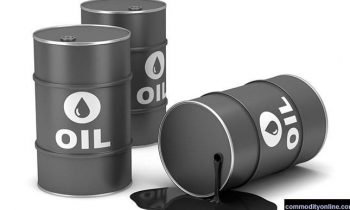
… too dangerous for Nigerian economy
…landing cost of PMS heads towards N300 per litre
Olusola Bello
Nigeria economy may be heading towards a dangerous dimension with oil prices hitting new highs since 2018 on Wednesday.
This means subsidy on the petrol would also go up. Already, the price of petrol has hit N256 per litre as against the official regulated price of N162 per litre. Subsidy on the commodity has also hit has N150 billion.
The upward movement of crude oil prices happened after the government supply-demand data showed not only the lowest U.S. crude stockpiles prior to the Covid-19 outbreak but also a huge surprising drawdown in gasoline that attested to a strong run-up to summer driving.
Nigeria currently depend solely on importation of refined product as her refineries are not working. With price going as high as $76 per barrel it means the price of refined products would also move up since the price of crude influences the price of refined products.
West Texas Intermediate crude, the benchmark for U.S. oil, soared to as high as $74.25 per barrel, a peak not seen since Oct. 18, before settling at $73.07. While the rise on the day was just 23 cents or 0.3%, WTI gained as much as 2% on the week.
Brent, the global benchmark for oil, also hit a 2018 peak, at $76 per barrel, before consolidating to finish the session at $74.50, down 31 cents or 0.4%.
However oil prices gave up their early highs after reports that producer group OPEC+ affirmed it would add 500,000 barrels per day to its August output, after a 440,000-bpd hike in July. For context, the 23-nation OPEC+ coalition kept 7 million bpd or more off the market between April 2020 and March this year, before gradually adding to supply.
WTI and Brent prices hit near three-year highs earlier in the day after the Energy Information Administration reported that U.S. crude inventories fell 7.614 million barrels last week, compared with analysts’ expectations for a draw of 3.942 million barrels.
That, according to the EIA, was the lowest weekly stockpile for crude since March 2020, predating the U.S. outbreak of the coronavirus pandemic that decimated demand for oil in subsequent months.
More than the crude draw, the surprise was in the gasoline drawdown reported by the EIA, which came in at 2.93 million barrels last versus expectations for a build of 833,000 barrels.
That erased concerns about gasoline demand after the initial tepid consumption for motor fuel in the immediate weeks around May’s Memorial Day, which marks the unofficial start of the peak U.S. summer driving season.
And while the agency said gasoline production increased last week, averaging 10.3 million barrels per day, refinery crude runs actually slowed slightly, dropping by 0.4 percent to 92.2%.
The only laggard was the distillates component of the market, where stockpiles of diesel and heating oil rose 1.754 million barrels against forecasts for a build of 1.083 million barrels.
Exports of U.S. crude, meanwhile, remained red-hot at 3.65 million barrels per day versus the previous week’s 3.89 million.
U.S. production of crude itself remained anemic at an estimated 11.1 million barrels daily versus the previous week’s 11.2 million, although that looked set to increase with WTI nearing $75 per barrel.



